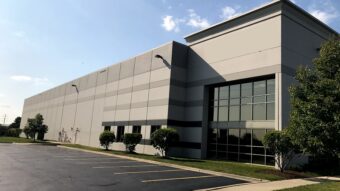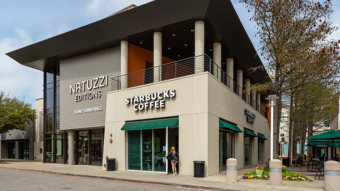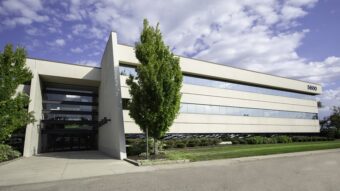
Guest post by Jeff Berta Senior Director of Real Estate Development with Structured Development
With e-commerce accounting for a greater share of retail sales, real estate developers are finding creative ways to stay relevant in the eyes of consumers who, increasingly, favor clicks over bricks. In order to provide experiences that can’t easily be replicated online, today’s developers are incorporating retail – including restaurant and entertainment offerings – into larger mixed-use centers designed to serve as neighborhood anchors.
And rather than viewing each storefront as an individual vacancy that needs to be filled, developers are thinking more holistically as they look to create synergies not only among retail tenants, but also among the various components – residential, office and healthcare, to name a few – that a single mixed-use development might house.
Such was the case with NEWCITY, an award-winning mixed-use development in Chicago’s Lincoln Park neighborhood that our firm, Structured Development, completed in 2015. Previously home to the NewCity YMCA, the 8.5-acre parcel bounded by Halsted and Schiller streets and Clybourn Avenue was underutilized in its original state, due in part to the design challenges associated with its triangular shape. Yet where others saw insurmountable hurdles we recognized an opportunity to create a vibrant residential, retail and office complex that complemented existing offerings in the rapidly evolving Clybourn Corridor while expanding the local tax base.
While no two developments are alike, the basic principles that allowed us to establish NEWCITY as one of Chicago’s premier destination centers reflect the strategies other developers are employing in their own mixed-use projects. As the name implies, the key to creating a successful mixed-use development is pinpointing the right mix of uses for a particular location, striking a balance between “daily needs” traffic drivers and experiential retail, restaurant and entertainment offerings.
Apparel and Accessories: The Personal Experience
According to a recent study from Salesfloor, a leading retail technology provider, 58 percent of retail consumers surveyed say online shopping lacks the level of service offered in stores, while 87 percent of shoppers are more likely to buy an item recommended from a sales associate. As developers analyze neighborhoods and specific sites, it’s important to consider what’s already available to area residents and visitors and plan for a mix of retail options that will compete with the growing number of online options while enhancing the surrounding retail landscape.
There is undoubtedly a market for items that can be purchased online without having to see, hear, touch or feel them in person first, but shopping has always been a serendipitous activity through which consumers browse – and often purchase – goods they didn’t set out to buy and may not have even known existed. Especially at higher price points, personal items that require a ‘test drive’ are also excellent retail drivers in mixed-use settings. Consumers want to swing a bat, try on a glove or get a feel for that driver before making the purchase. Similarly, shoes and handbags fall under a list of highly personal items – in both form and function – that many consumers still want to examine first-hand before purchasing.
Off-Price Retail: A Complementary Use
Once clustered in discount centers, often in far-flung suburban locations, off-price retailers are a valuable addition to urban mixed-use developments like NEWCITY, home to Saks Fifth Avenue OFF 5TH. Consumers who grew cost-conscious during the recession have not lost their penchant for affordably priced goods and services, and these discount options, including brands like T.J. Maxx and Nordstrom Rack, complement full-price retail offerings in the development and surrounding neighborhood.
While each off-price brand has its own clientele, the basic formula is the same: personalized, in-store service paired with steeply discounted merchandise that varies from store to store and may not be available – or can only be researched – online. With off-price apparel revenue projected to grow between 6 and 8 percent over the next five years, versus 4 percent for the apparel segment overall, these brands have experienced growth in a retail environment that has proven especially challenging for traditional department stores, some of which have entered the off-price category to offset sluggish sales at their full-price locations.
Daily Needs: Errands Draw Visitors
Another vital component of successful mixed-use developments is daily needs – or necessities-based – traffic drivers. Capital One, the online bank and credit card issuer, recently entered brick-and-mortar with its Capital One Café concept, which combines banking with grab-and-go food and beverage items in a setting that looks more like a coffee shop than a financial institution. Grocery stores have also adjusted their strategy, featuring live music, full-service bars and “grocerants.” According to a recent NPD Group report, in-store dining and take-out of prepared foods from grocers has grown nearly 30 percent since 2008.
While it may not be as visible or flashy as retail, office space can also increase foot traffic in a mixed-use development. In addition to housing employees who may frequent adjacent shops and restaurants over lunch or after work, offices – including those used by physicians, dentists, optometrists and other specialists – can draw visitors to a center they might not otherwise patronize. Someone who comes for a check-up may find themselves in the checkout line before their visit is complete. Similarly, other service-oriented businesses like dry cleaners, hair and nail salons, and fitness studios can help increase the frequency of visits, supporting other businesses in the center.
Entertainment: Creating a Destination
Restaurants and entertainment offerings can turn an ordinary mixed-use center into a destination – one that attracts visitors on evenings and weekends. At NEWCITY, we saw an opportunity to create a neighborhood anchor by including a variety of bars and restaurants, as well as a 14-screen ArcLight Cinemas movie theater and 16-lane Kings Bowl bowling alley – two entertainment options not previously available in the surrounding neighborhood.
Like banks and grocery stores, these entertainment uses have evolved to become even more experiential. At ArcLight, customers can sip signature cocktails from the bar or grab a bite to eat at the theater’s café – a step up from the standard concession stand. Kings Bowl takes a similar upscale approach, with retro-inspired décor accented by pops of color, a full-service restaurant and 222-foot bar with curated beers that rotate seasonally. Top-of-the-line sound, lighting and music systems, along with table games and more than 50 TVs, round out the experience, creating a lively, social atmosphere unmatched by online or virtual gaming.
Residential: A Built-in Customer Base
One of the earliest and most basic examples of mixed-use development was the shop owner who lived above their place of business. While these projects have grown in size and complexity, the residential component remains as viable today as it was then, contributing to the overall success of the center.
Along with creating an additional source of revenue, residential units provide a built-in customer base for adjacent businesses, which are frequented not only by full-time residents, but also their visiting friends and family members. It’s a mutually beneficial relationship, as residents are able to enjoy a walkable lifestyle, with shops, restaurants and nightlife steps from their front door. The incorporation of a residential component like the 19-story, 199-unit Residences at NEWCITY also helps foster a sense of community within the development, further adding to its appeal.
Going forward, as consumer shopping and spending habits continue to evolve, the most successful mixed-use centers will be the ones that provide services and experiences that technology can’t touch. Consumers can purchase meals and groceries online, but they can’t sample them first, just as they can’t try on clothing, shoes and accessories without making a trip to the store, where an associate is available to answer any questions they may have. That tangibility, along with immersive dining, nightlife and entertainment offerings, is sure to stand the test of time, shaping the design of tomorrow’s live-work-play communities.
Structured Development is a real estate development company based in Chicago. Jeff Berta is senior director of real estate development with the company.



